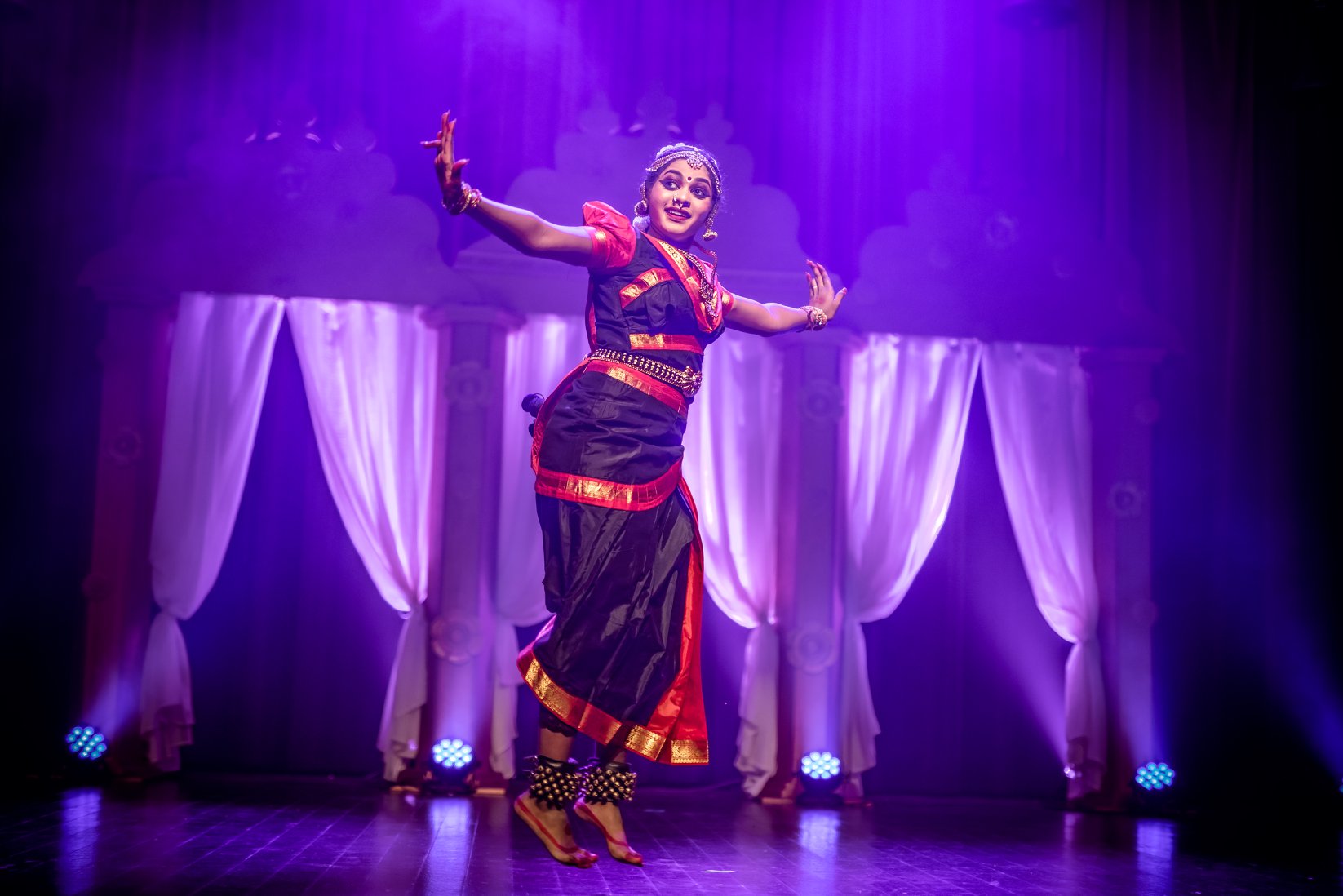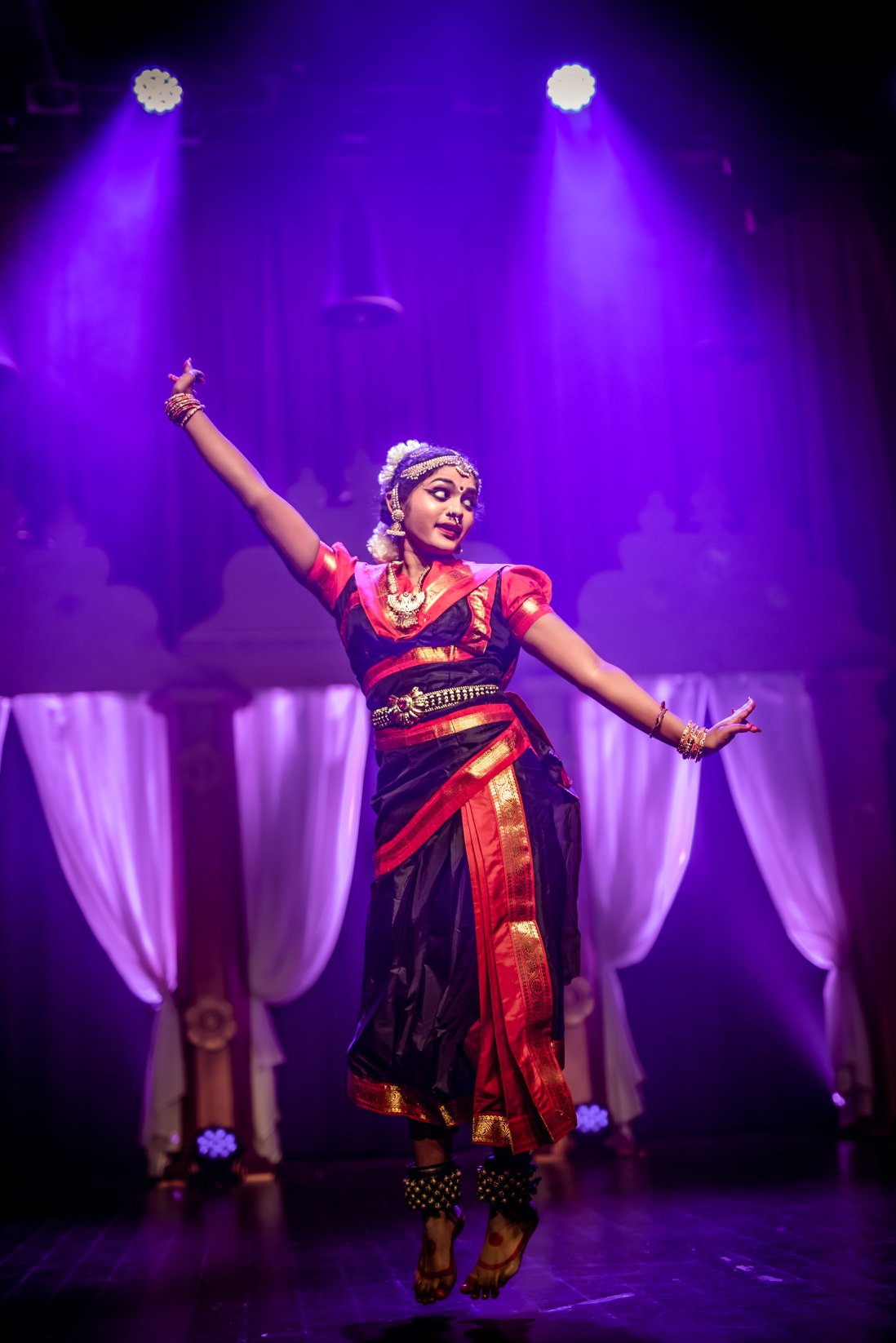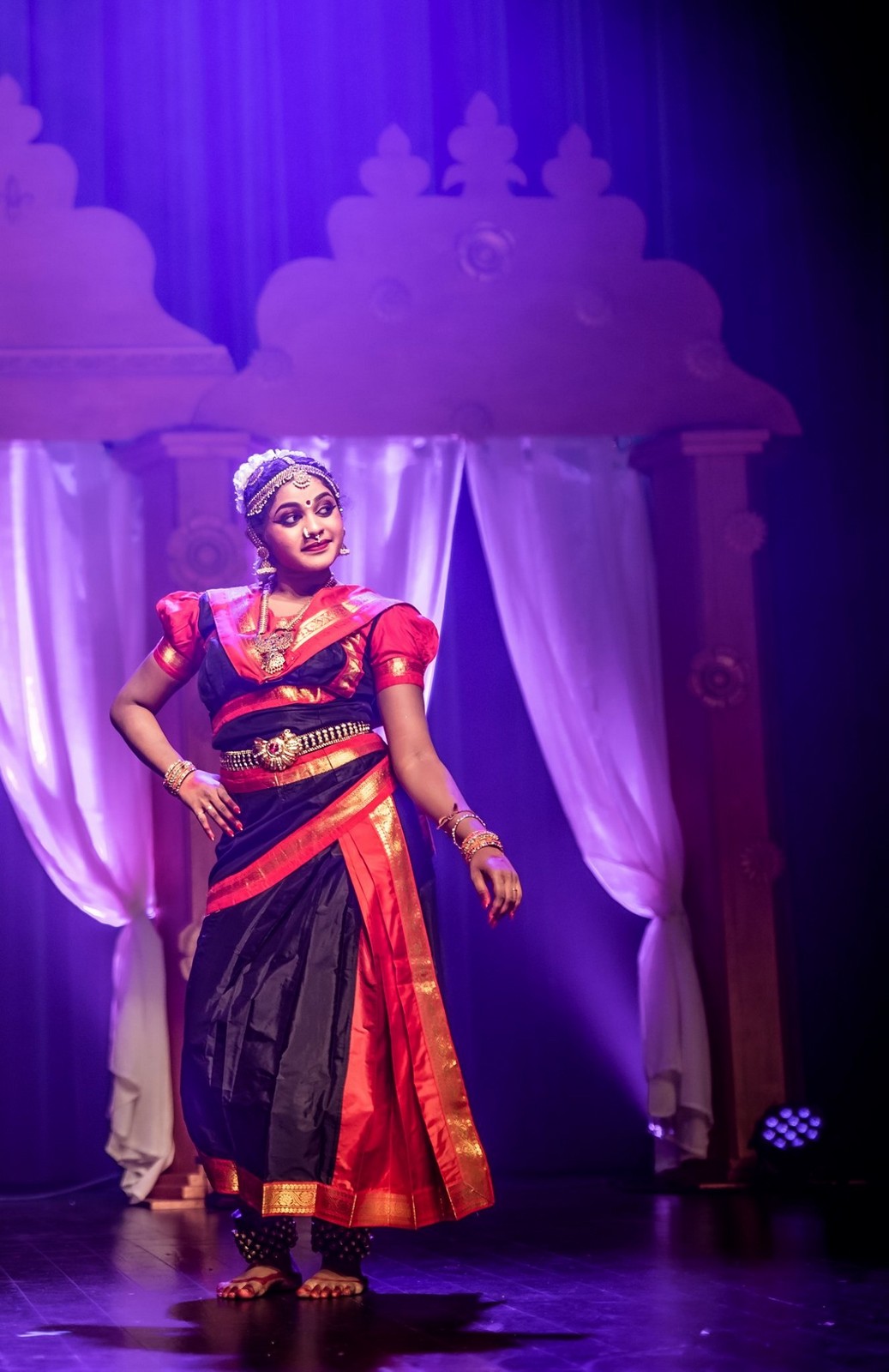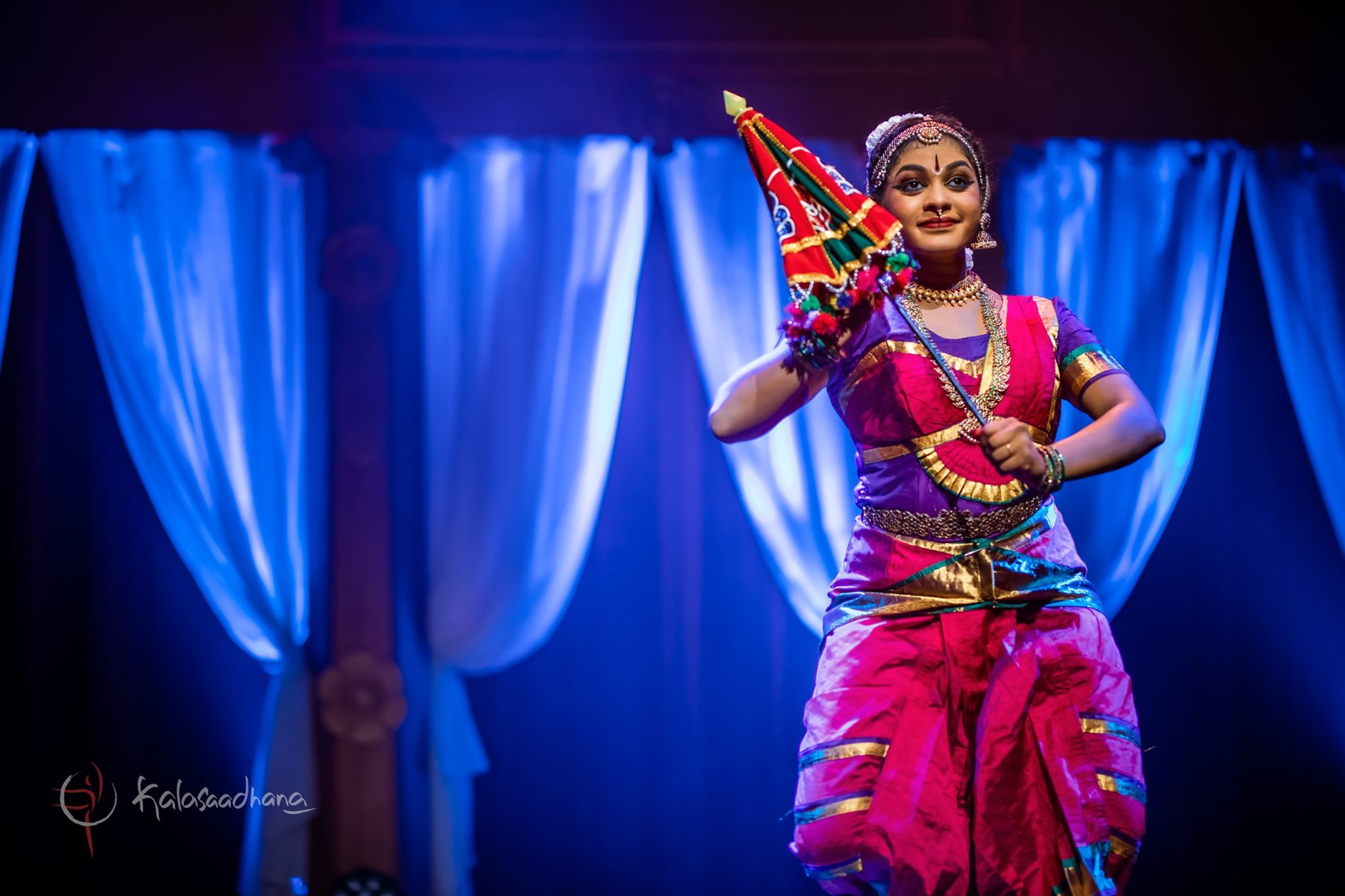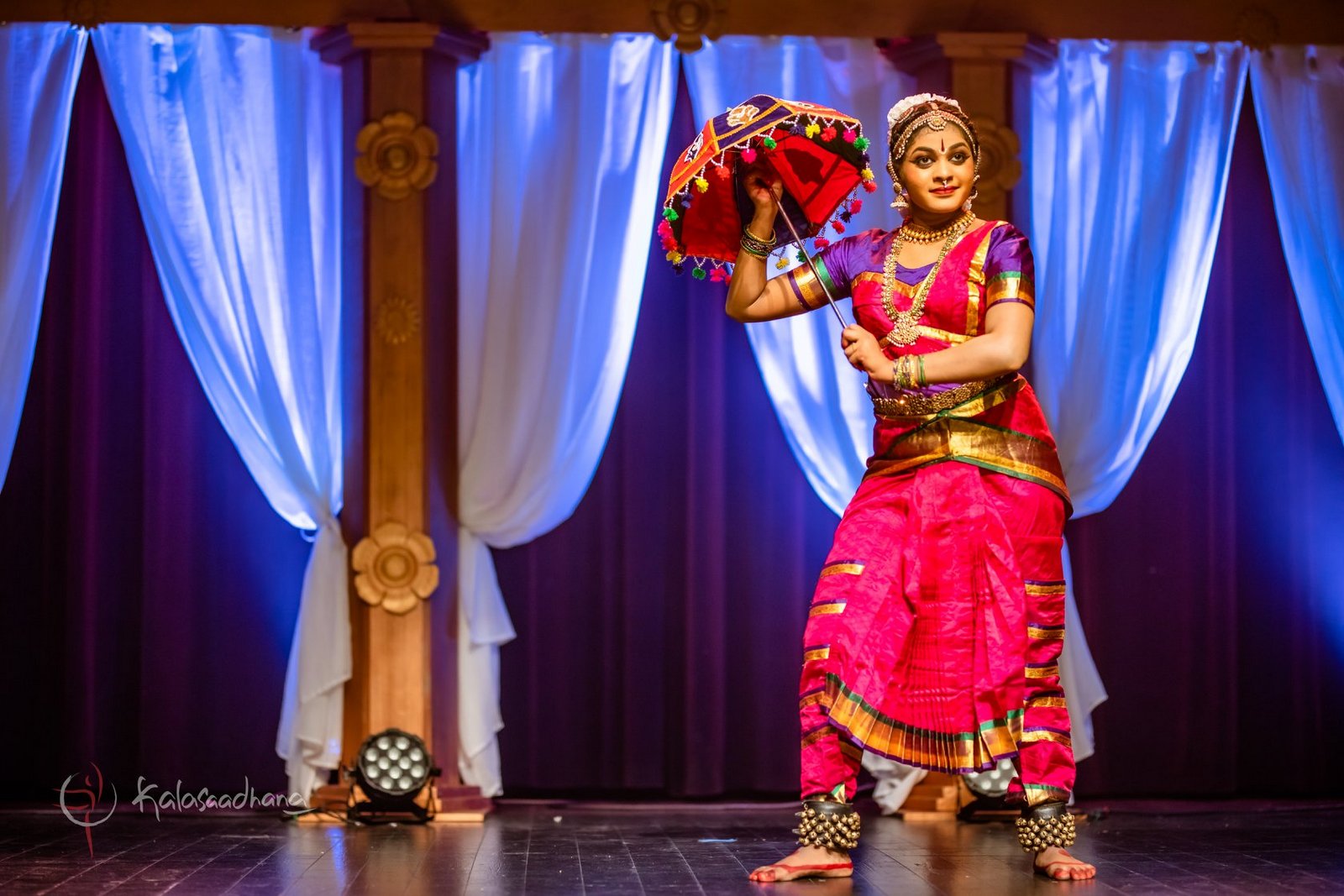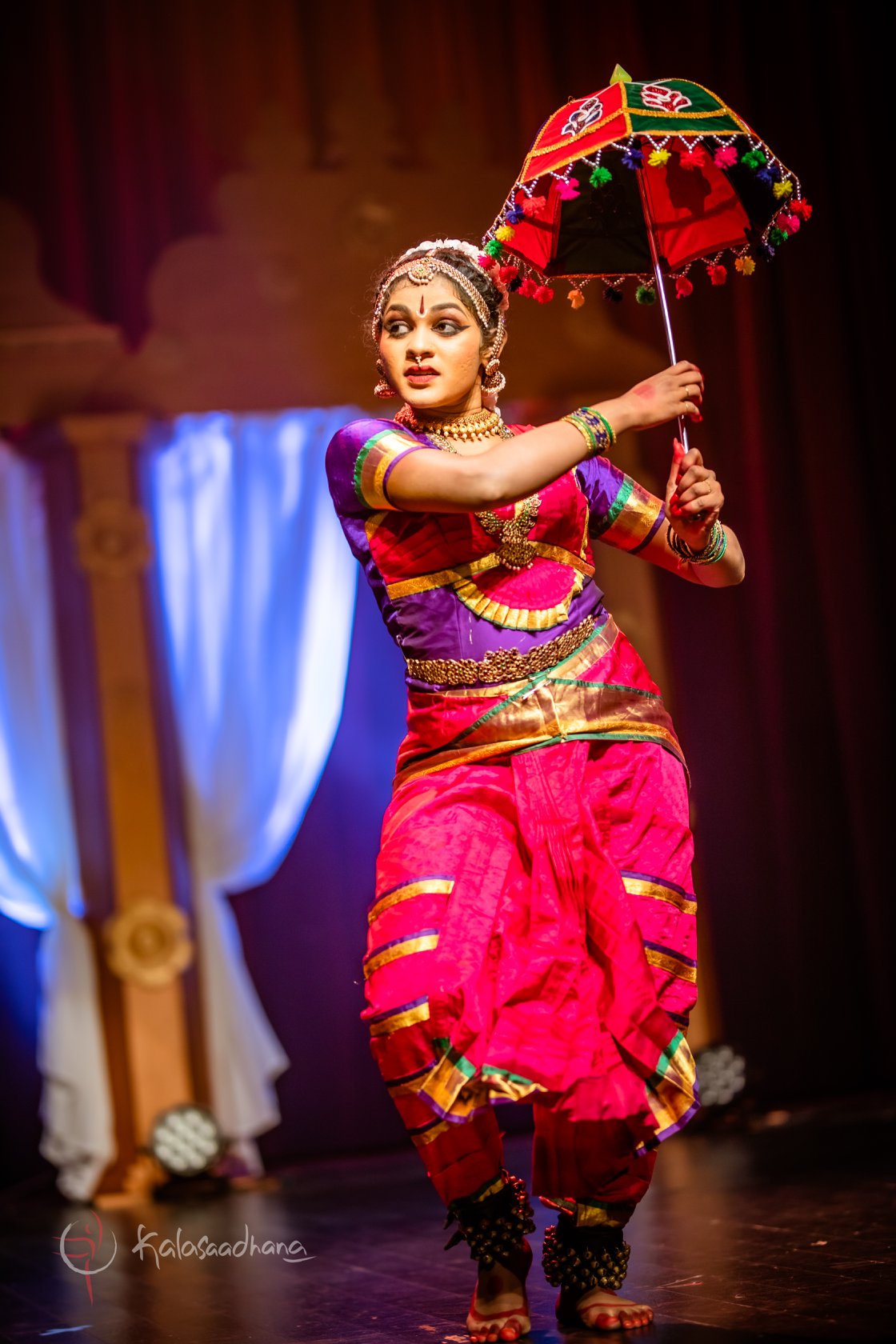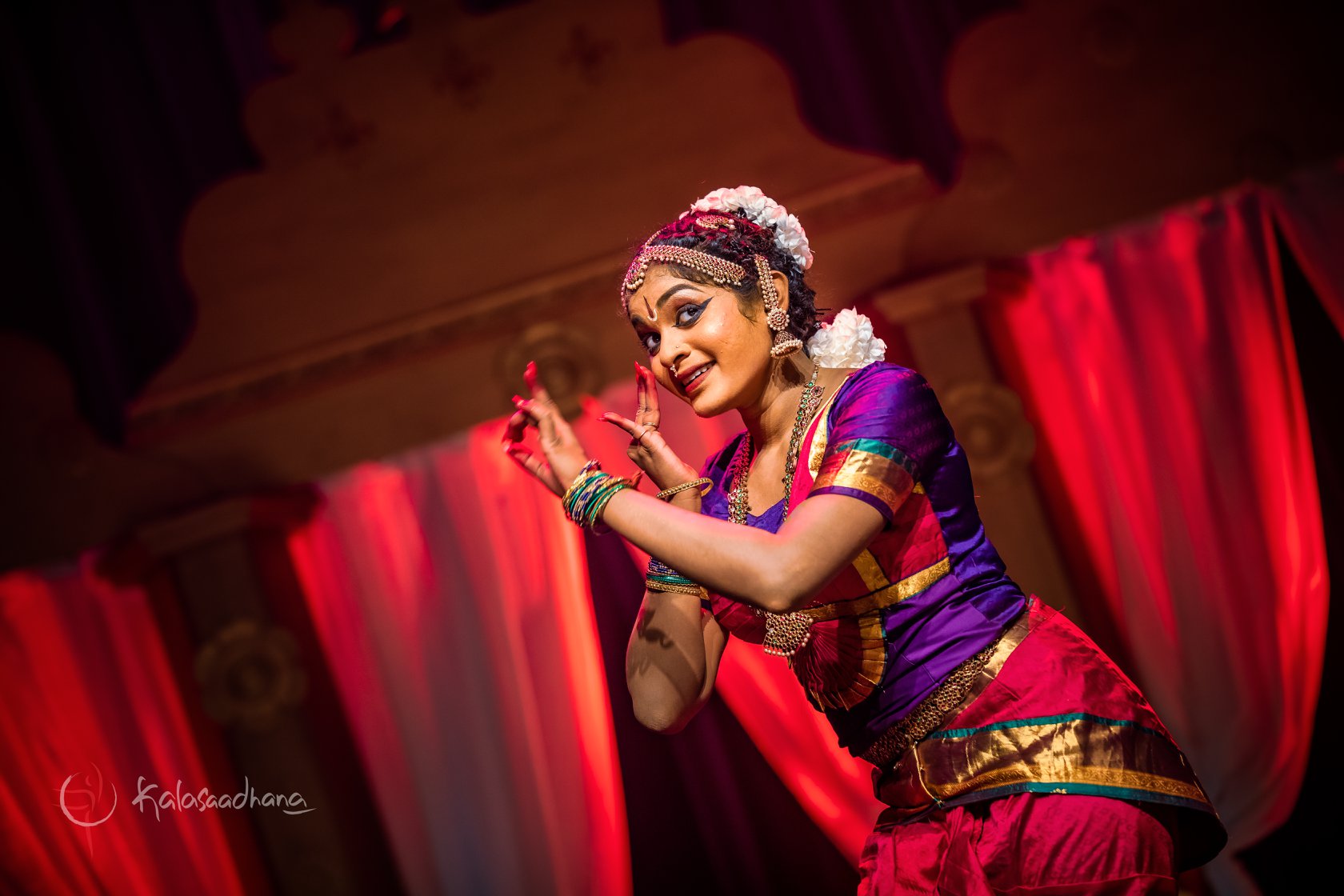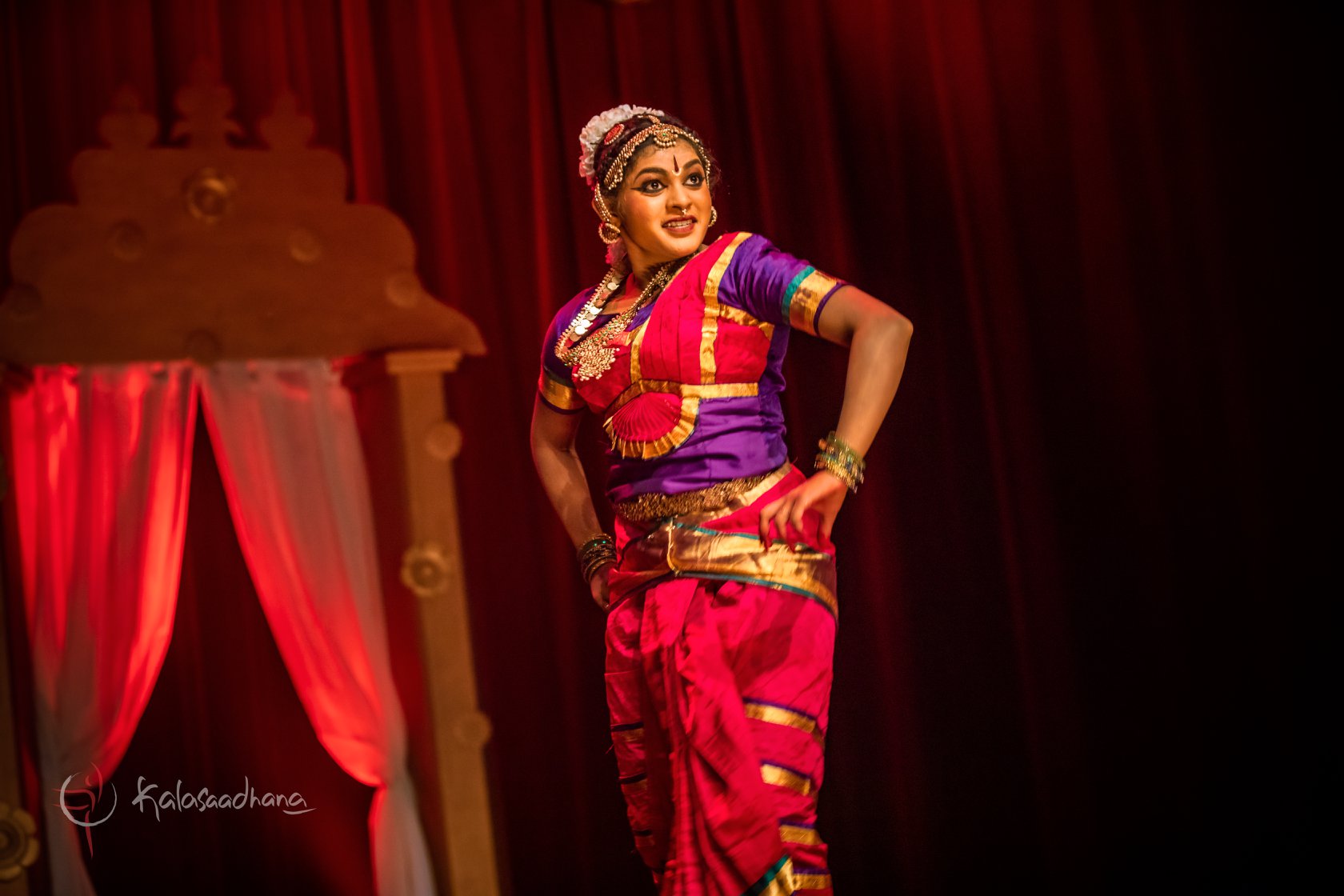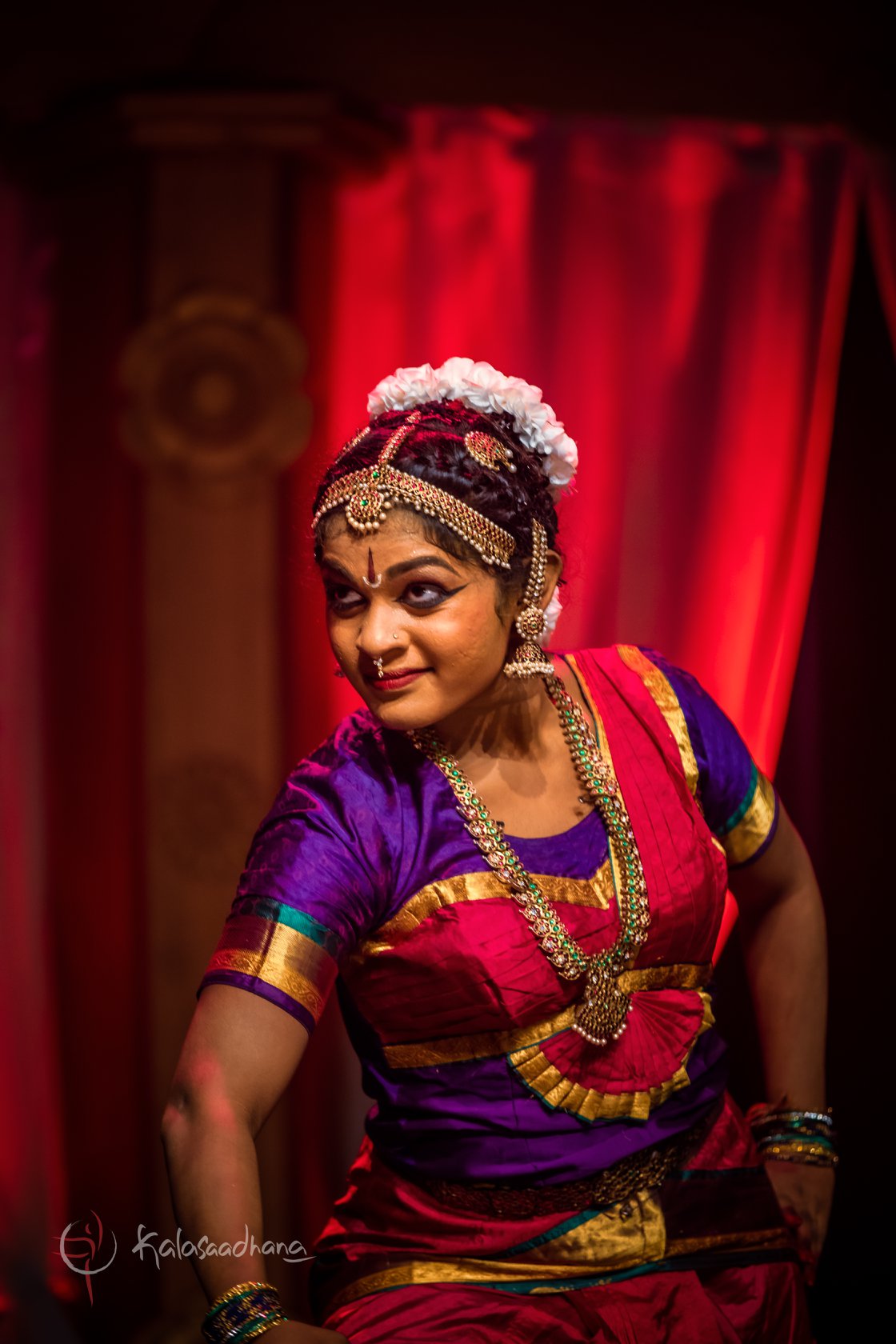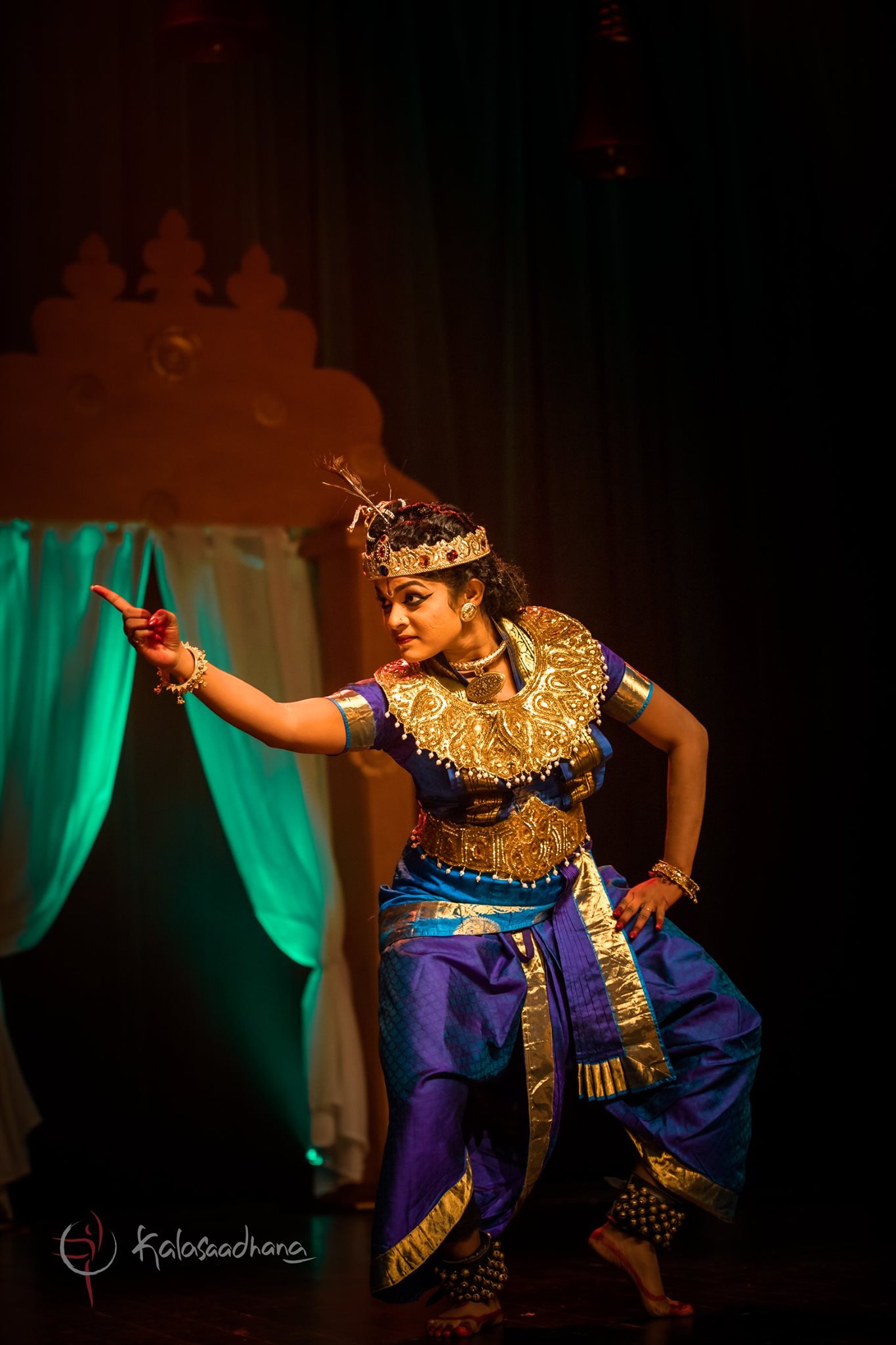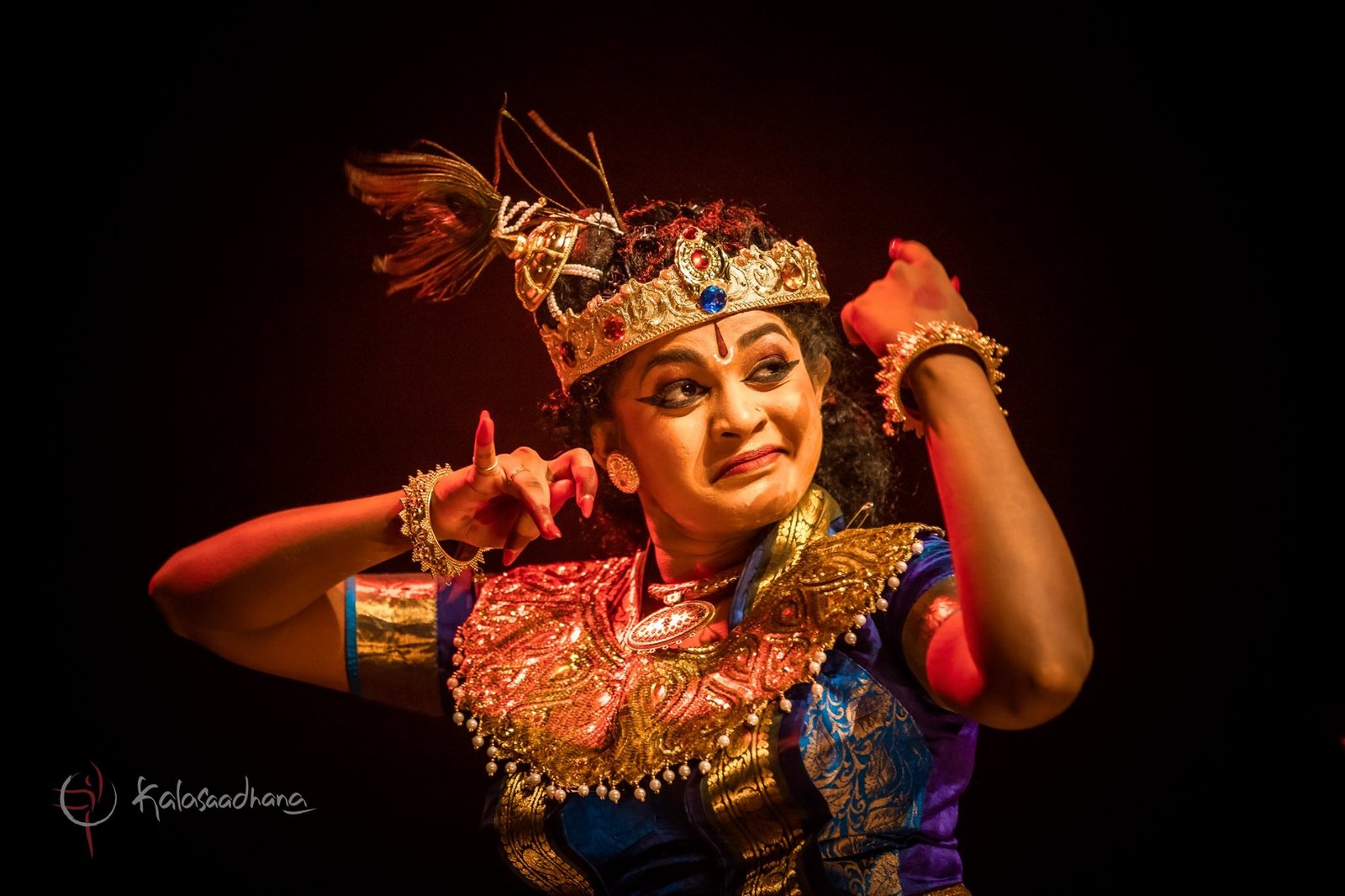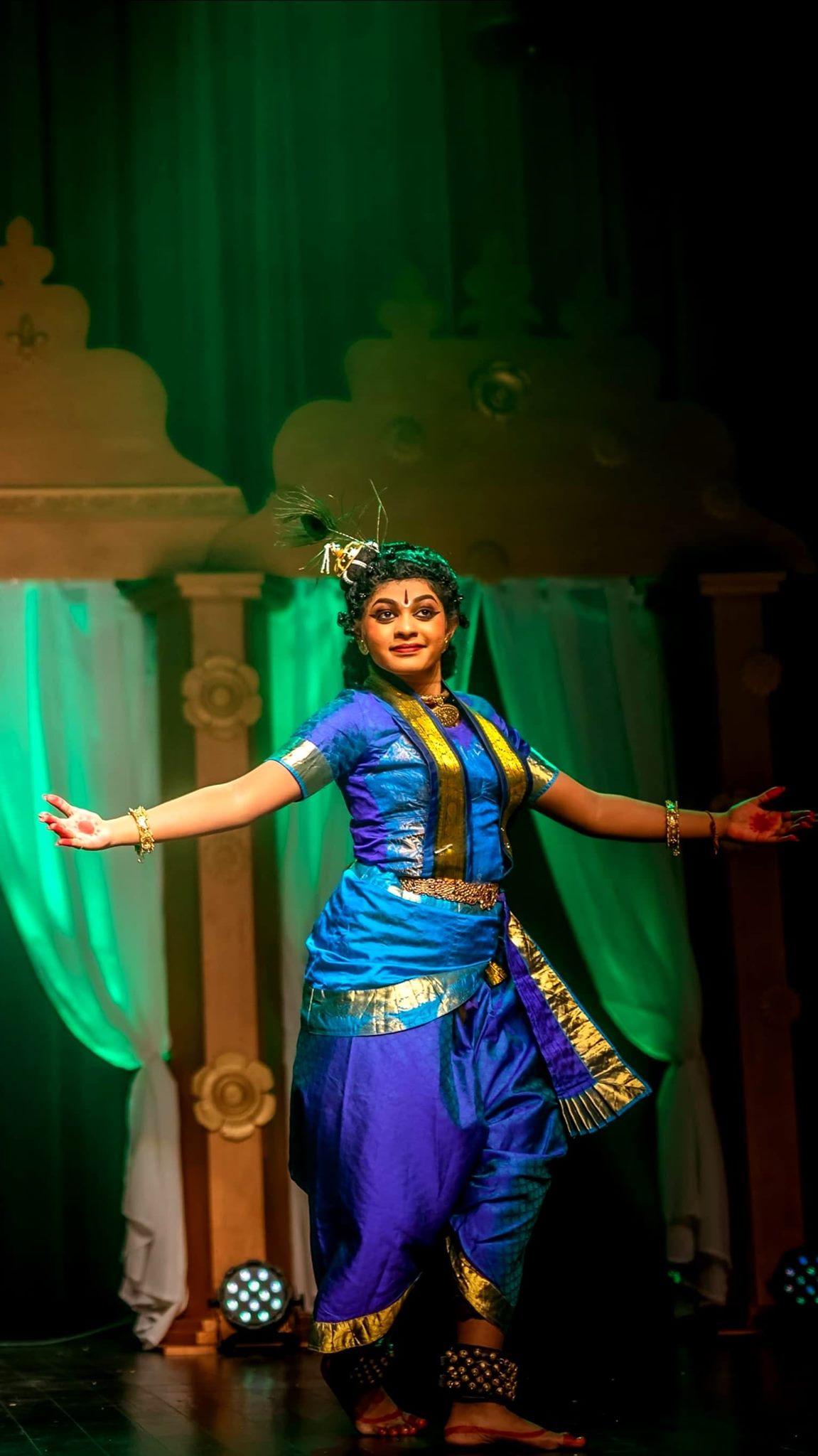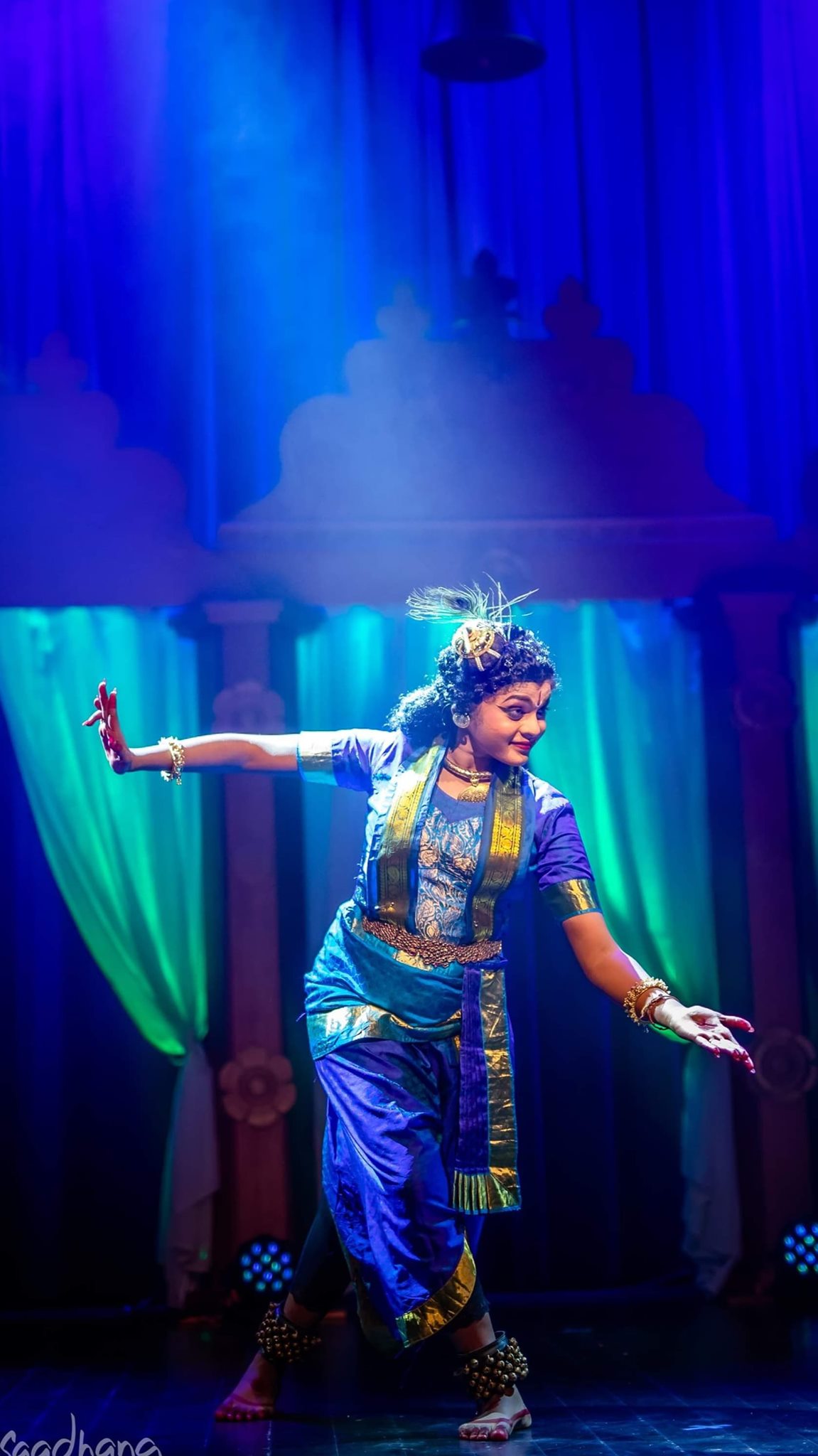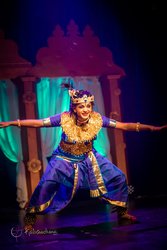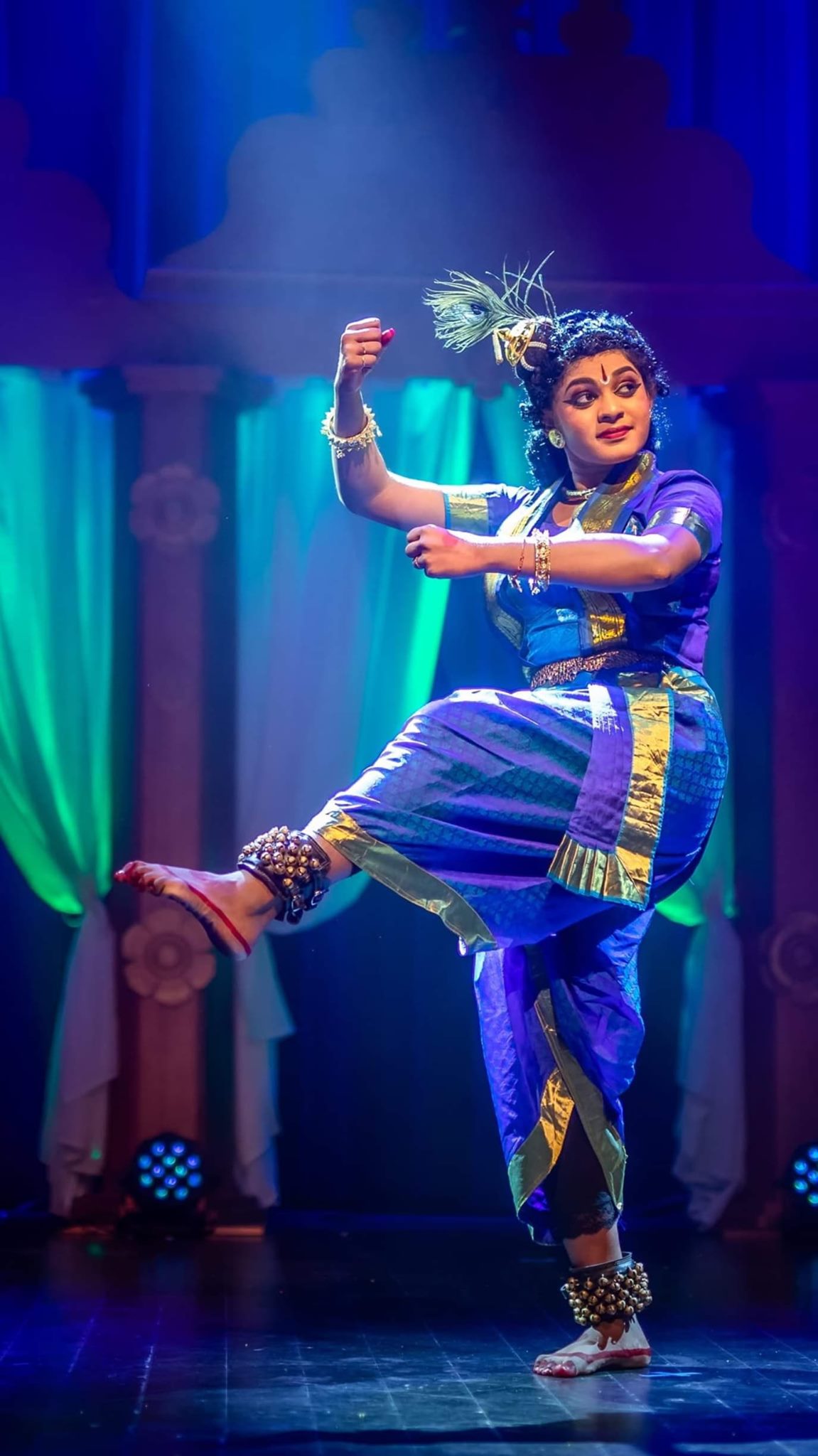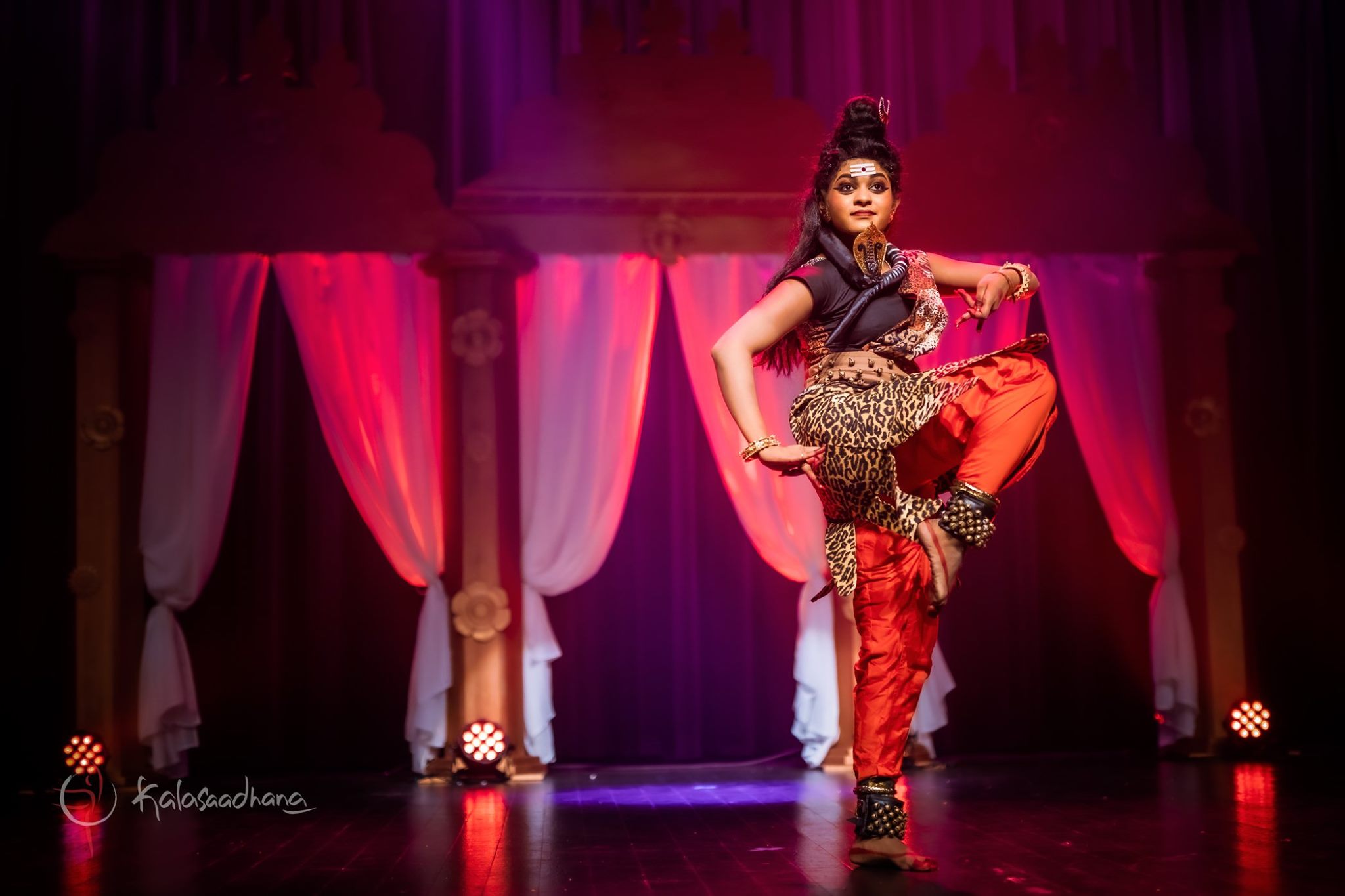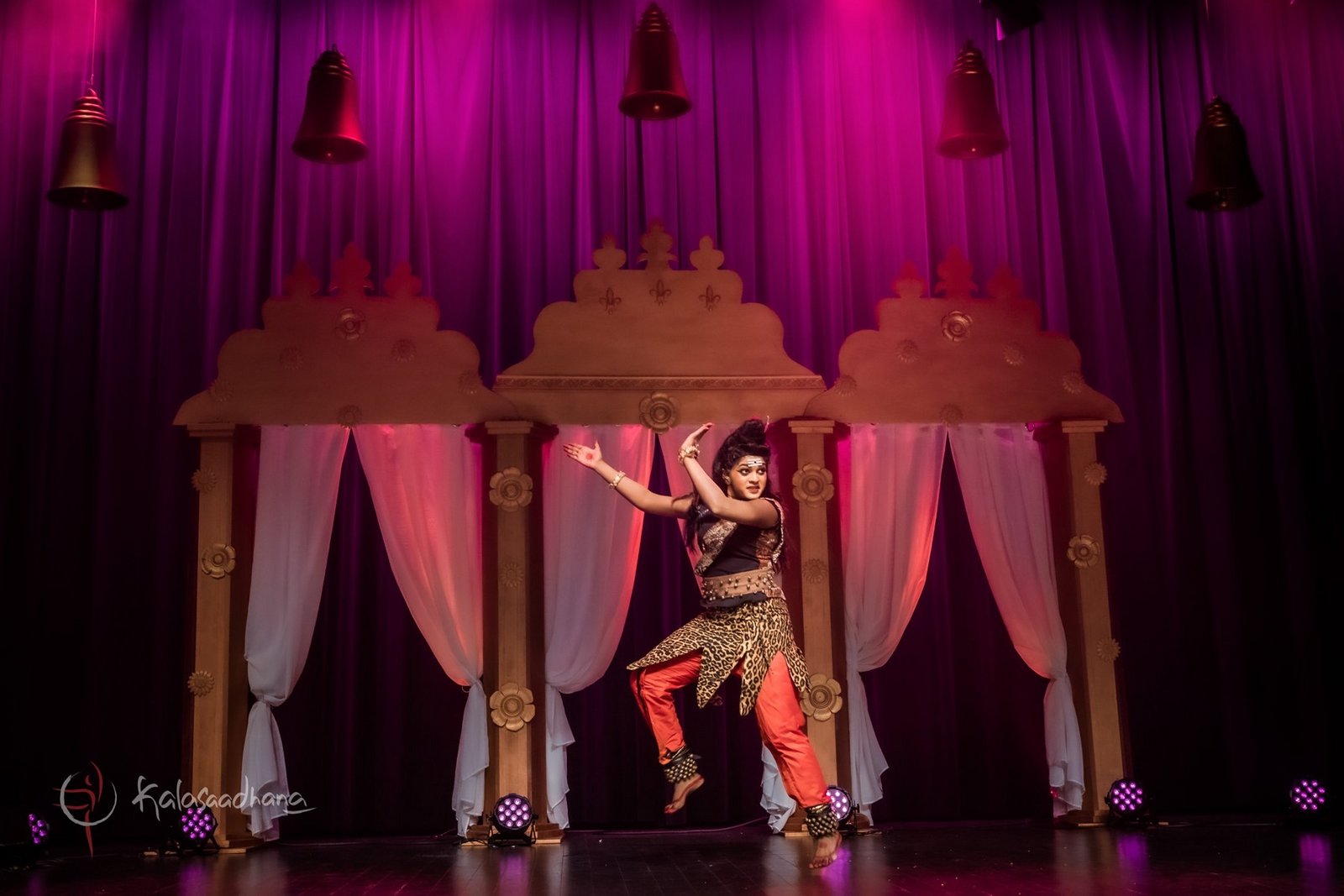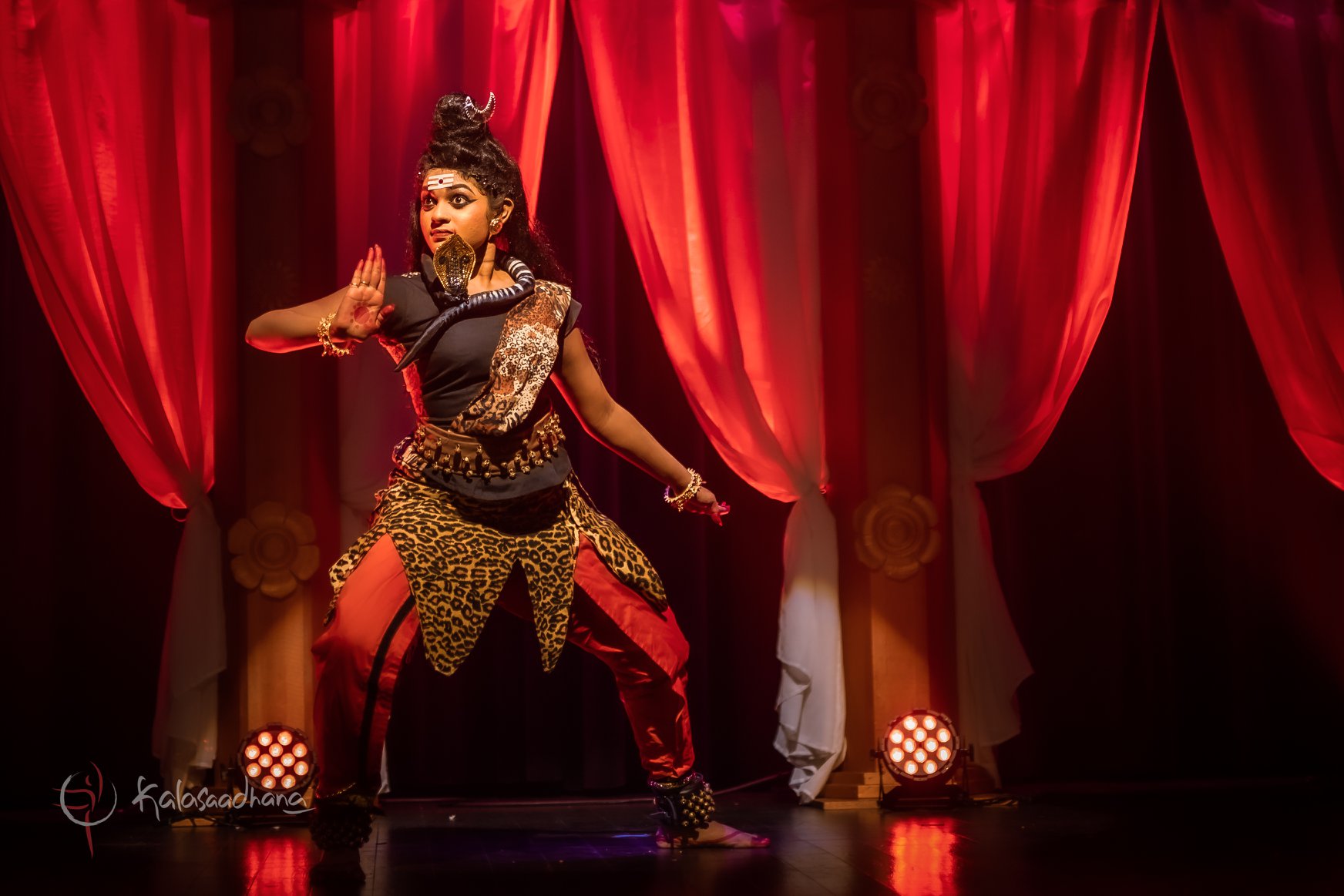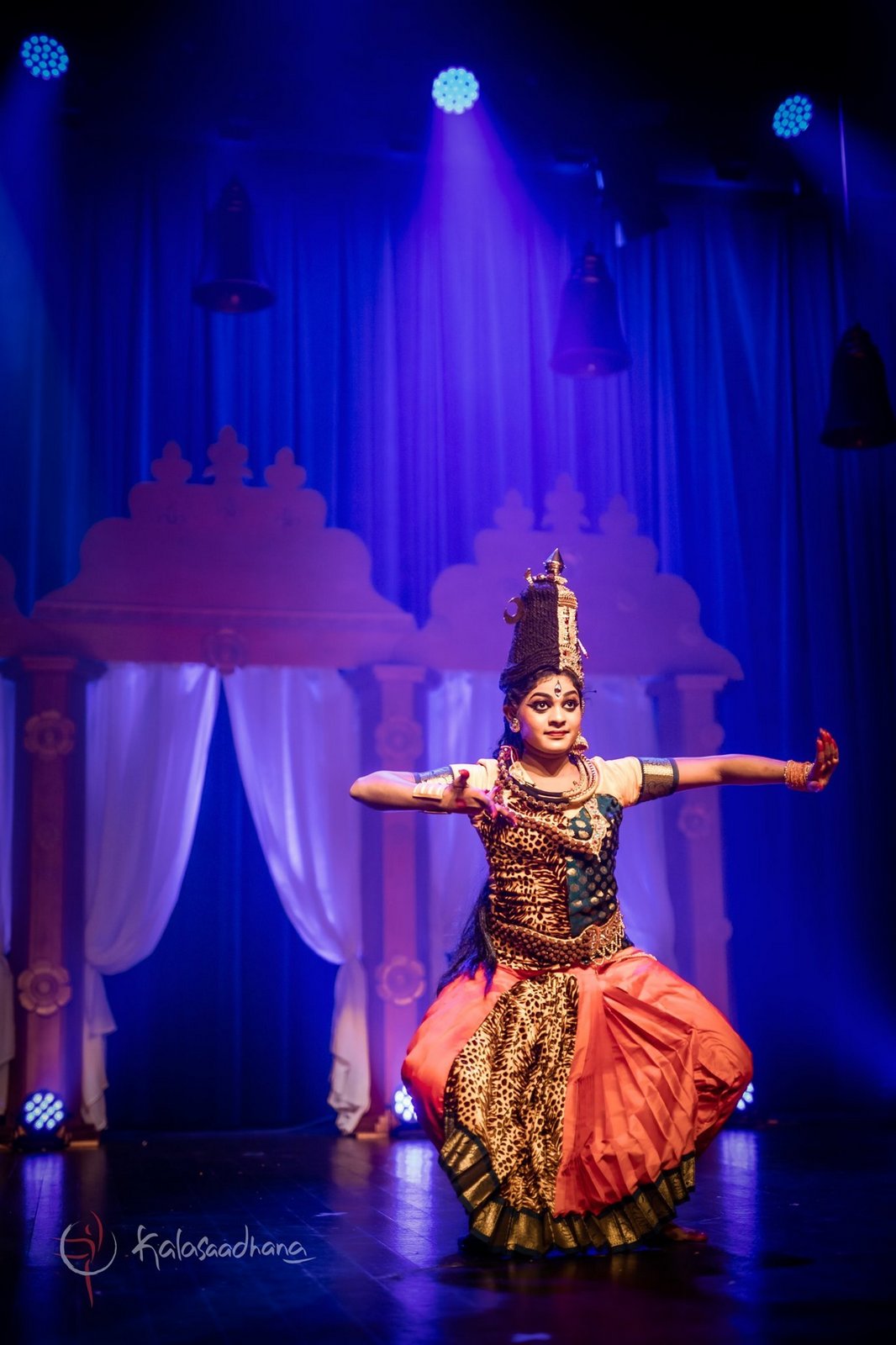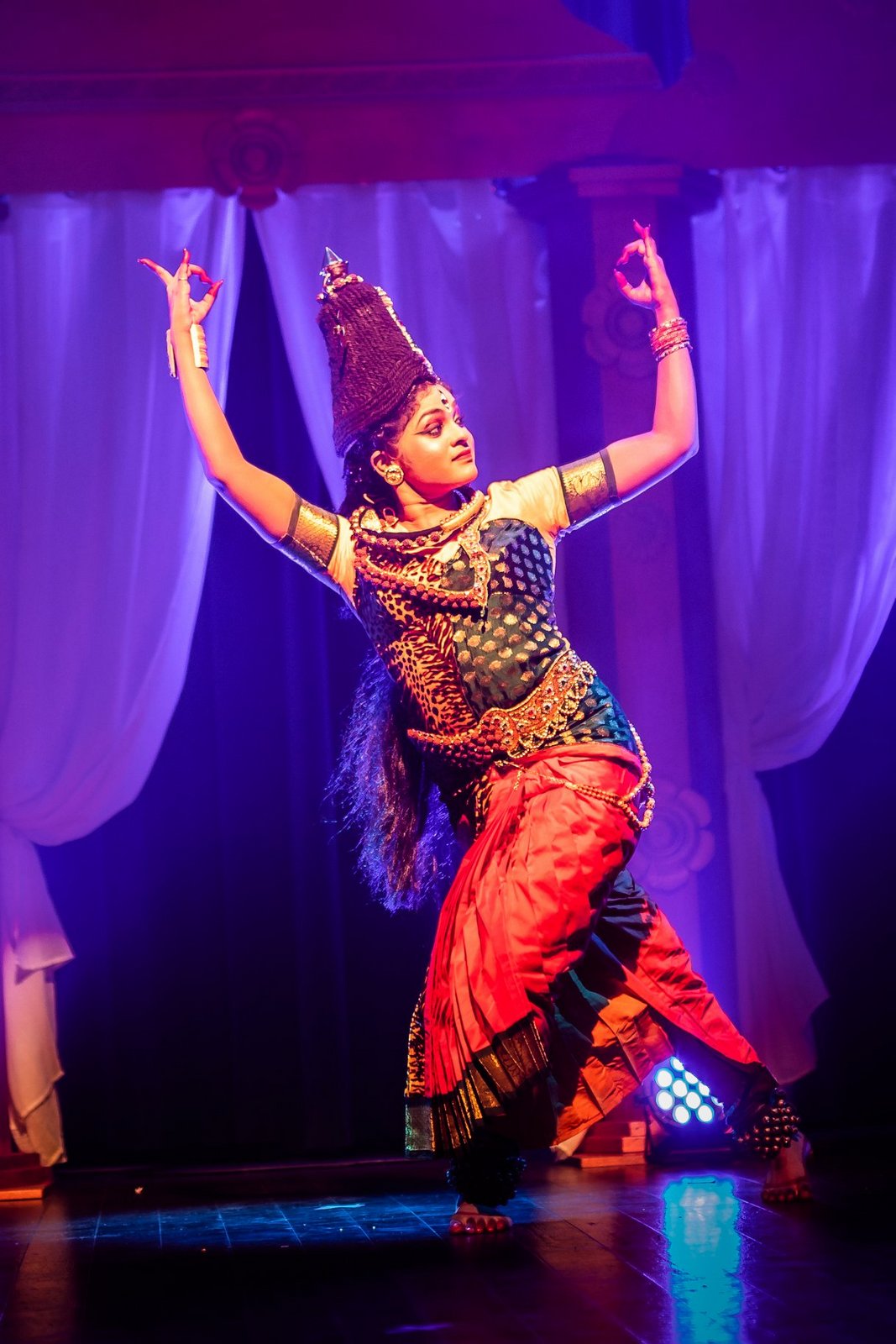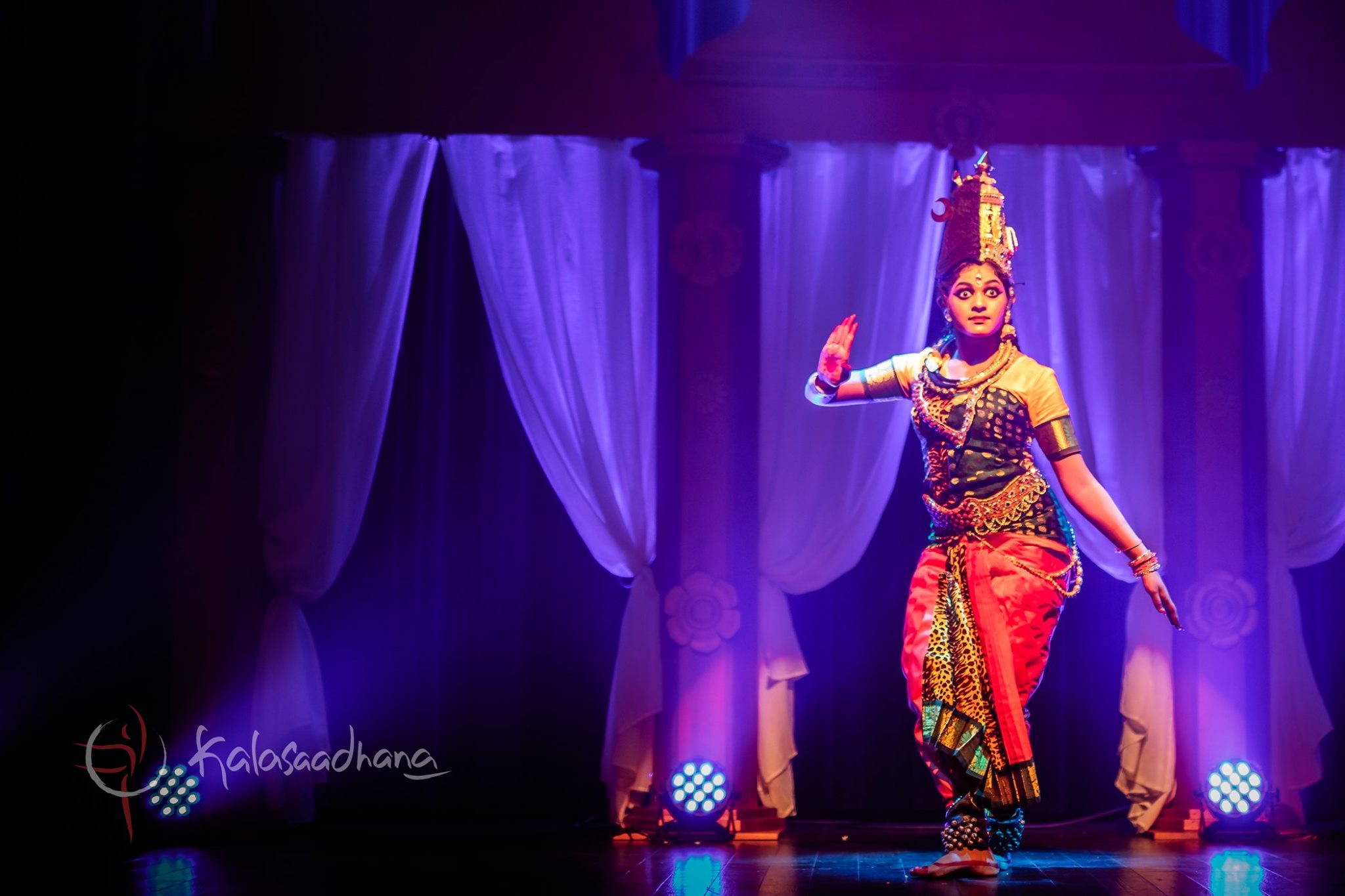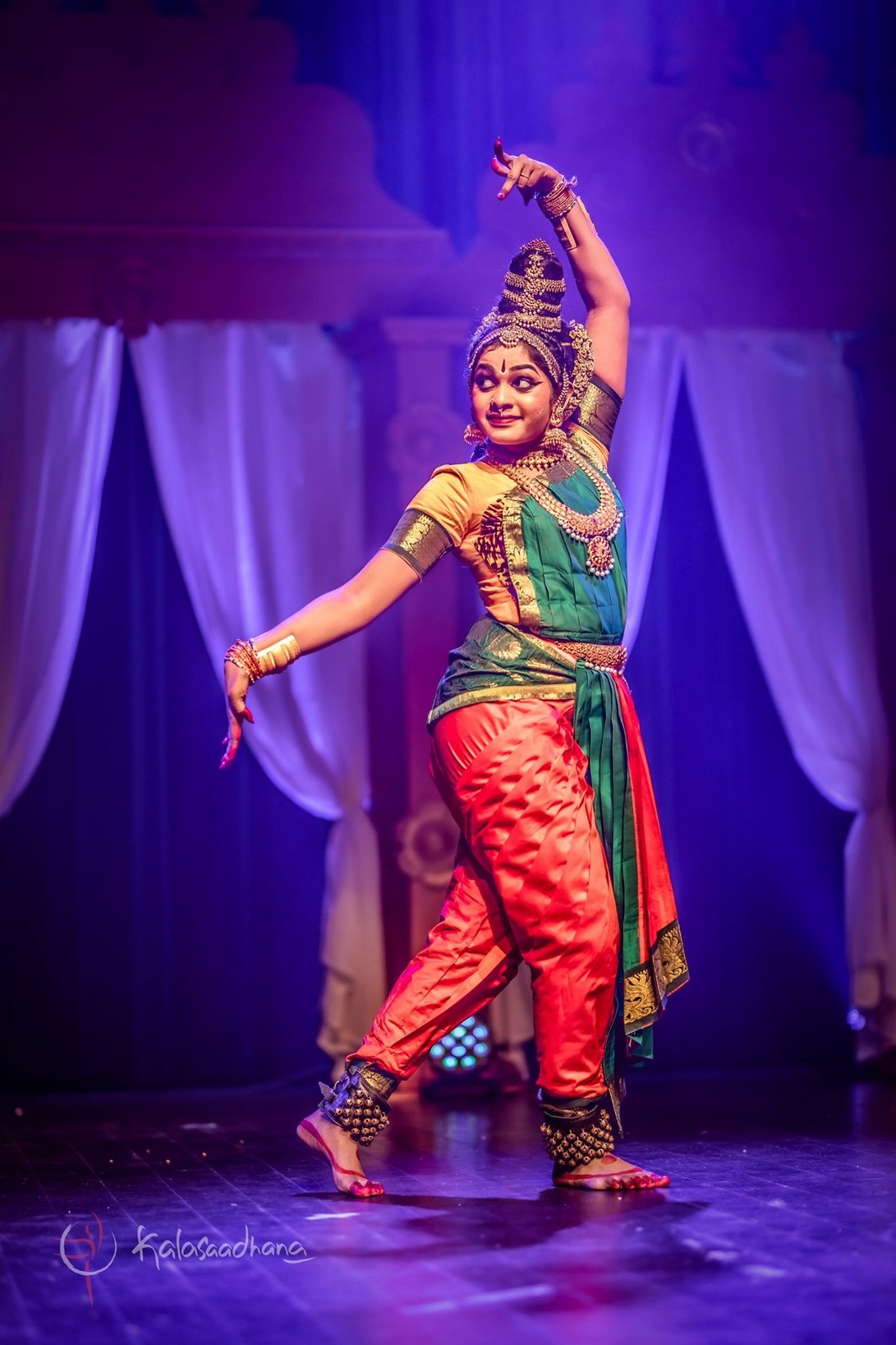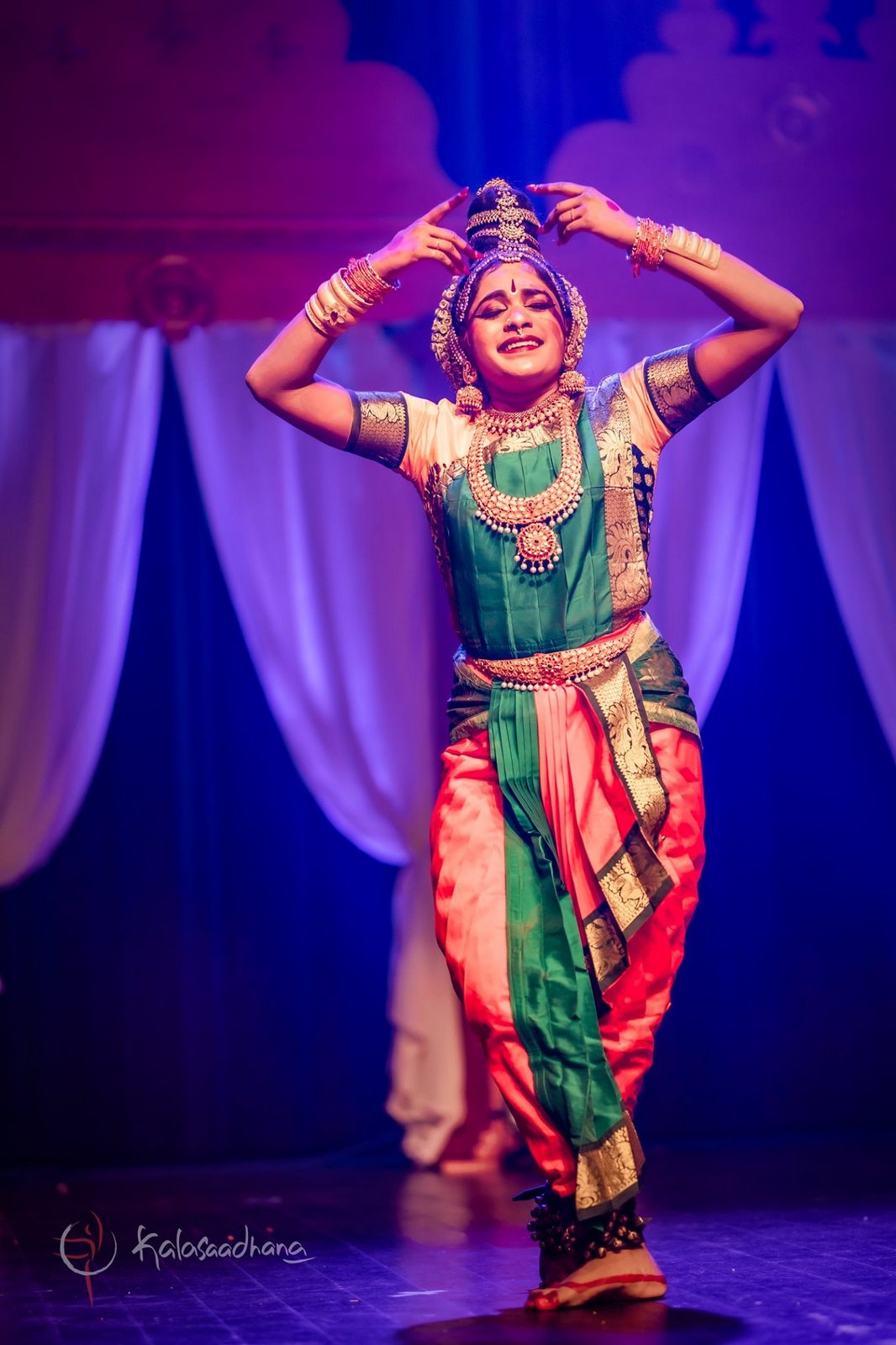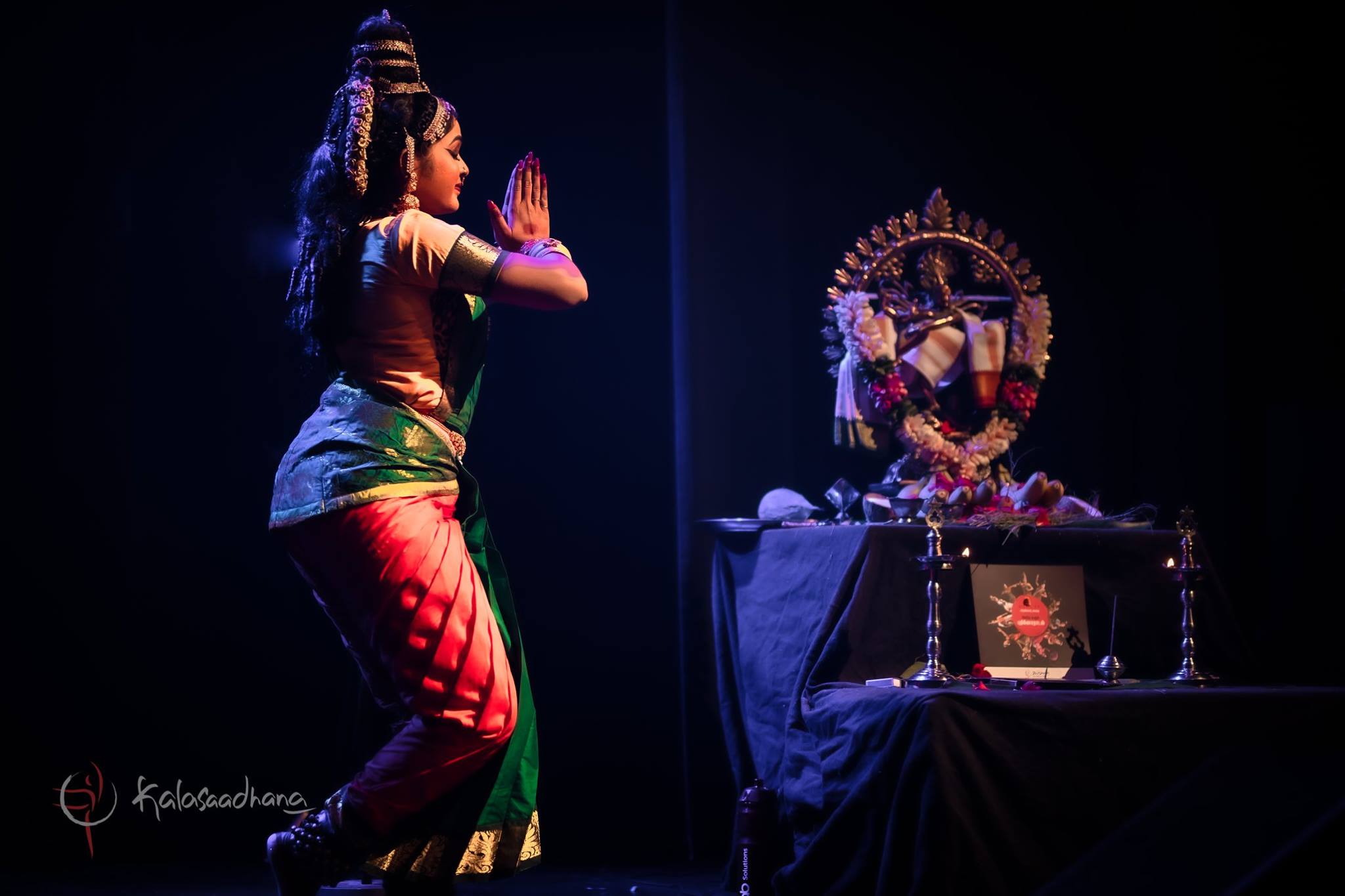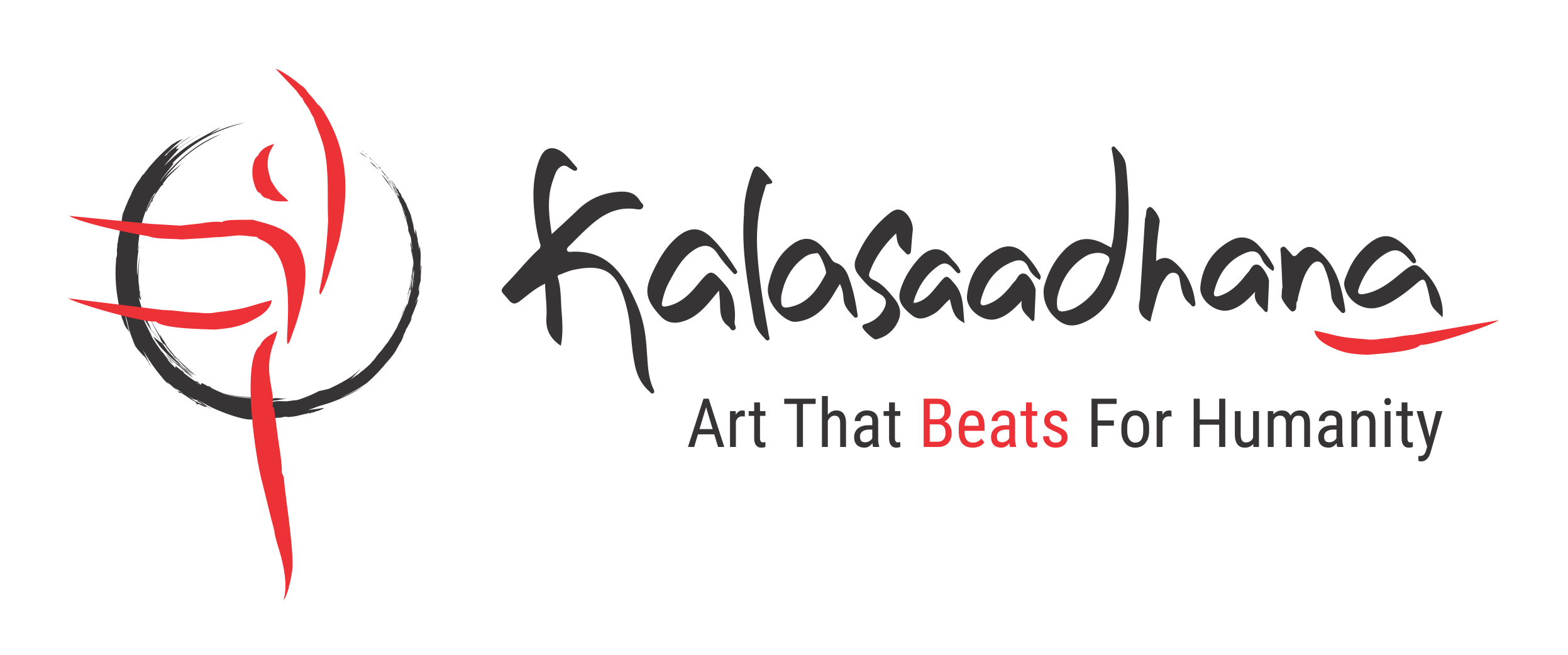11 Forms of Natyam - சிலம்பு கூறும் பதினோராடல்
The 11-dances of Cilappatikāram
Cilappatikāram is a unique Tamil epic, authored by Iḷaṅkō Aṭikaḷ, a prince-turned-ascetic hailing from the Cēra country that was one of the three kingdoms of Ancient Tamiḻakam. The exact date of the epic is debatable, but it is set against the backdrop of life in the Caṅkam Age (500 BCE-300 CE).
The epic is the story of Kaṇṇaki-Kōvalaṉ-Mātavi, the three main protagonists. It takes place across the three kingdoms, i.e., Cōḻa, Pāṇṭiya and Cēra, which were today’s Tamil Nadu, Kerala and some parts of Andhra and Karnataka. The geography goes beyond, as the epic also narrates the advent of Tamils to the Himalayas and to the Ganges. The king of Ilaṅkai (Lanka) figures in the epic as one who has endorsed the cult of Kaṇṇaki and to this day the story is a popular folk theatre and religious observation both among Eezham Tamils and Sinhalese.
Written in a style of prose-interwoven musical verse and designed for theatrical performance, Cilappatikāram covers all the three branches of classical Tamil: literature, music and dance. It is a great source of reference to the dance forms that were practised during its times, as Mātavi herself was a “Talaikkōli,” meaning the presiding dancer of the royal court.
The dances that come in Cilappatikāram could be broadly classified into two categories. One was text-based and classical, performed mostly by individuals to the relish of the royals and the elite public. The other was social and group dances, performed by the folks for the sake of themselves.
In yet another way of categorization, Cilappatikāram comes out with the dances of all the five landscapes of traditional Tamil classification. Mātavi performs a royal-court-styled dance at the Paṭṭiṉam of Pukār, which was Neytal (the littoral tract); she performs the 11-dances, another display of classical dance, to the festival public at the Ūr of Pukār, which was Marutam (the cultivation tract); the hunters dance in praise of the mother goddess Koṟṟavai in Pālai (the arid tract); the cowherds dance to propitiate Kaṇṇaṉ in Mullai (the sylvan tract) and the Kuṟavar tribe dances invoking Murukaṉ in Kuṟiñci (the hill tract).
There were also dance forms exclusive to men. Like the solo of Mātavi at Pukār, Kūttac Cākkaiyaṉ, a man, dances at the royal court of the Cēra king in Vañci.
Of all the dances of Cilappatikāram, there is a reason why the 11-dances performed by Mātavi has been chosen for this Araṅkēṟram. Story-telling coupled with text-based dance, which we see in the 11-dances, was a form that continued later into the temple dances and continued further when the Bharatam classical dance was revived in modern times.
The solo performance by a woman, which is mostly seen in the Araṅkēṟrams of today, has a long history beginning from the Viṟali of the Caṅkam times. Mātavi is perhaps the best illustrative example we come across in ancient Tamil literature. Kalāsādhanā takes immense pleasure in revisiting the 11-dances of Mātavi.
Kavitha Laxmi
02.12.2019
சிலப்பதிகாரம் கூறும் நடனக்கலைமரபு
'செந்தமிழ் கொடுந்தமிழ் என்றிரு பகுதியின்
ஐந்திணை மருங்கின்
...எழுத்தொடு புணர்ந்த சொல்அகத்து எழு பொருளை
இழுக்கா யாப்பின் அகனும் புறனும்
அவற்று வழிப்படூஉம் செவ்வி சிறந்து ஓங்கிய
பாடலும், எழாலும், பண்ணும், பாணியும்
அரங்கு, விலக்கே, ஆடல், என்று அனைத்தும்
ஒருங்குடன் தழீஇ, உடம்படக் கிடந்த
வரியும், குரவையும், சேதமும், என்று இவை
தெரிவுறு வகையான், செந்தமிழ் இயற்கையில்,'
இயற்றப்பட்ட,
'உரை இடையிட்ட பாட்டுடைச் செய்யுள்' சிலப்பதிகாரம் என்பதை அந்நூலின் இறுதிக் கட்டுரைப் பாகத்தாலும், முதற் பதிகத்தாலும் அறியலாம்.
முடியுடை வேந்தர் மூவரது நாடுகளதும் ஆடல் வகைகள் இந்நூலில் கூறப்பட்டிருப்பதை, 'அரங்கும் ஆடலும் தூக்கும் வரியும் பரந்து இசை எய்திய பாரதி விருத்தியும்;' என்ற புகார்க் காண்டக் கட்டுரையாலும், 'ஆரபடி சாத்துவதி என்றிரு விருத்தியும் நேரத் தோன்றும் வரியும் குரவையும் என்றிவை அனைத்தும்;' என்ற மதுரைக் காண்டக் கட்டுரையாலும் 'வரியும் குரவையும்' என்று வரும் வஞ்சிக் காண்டக் கட்டுரையாலும் அறியலாம்.
சிலப்பதிகார நடனங்கள் அடிப்படையில் இரு வகையானவை.
முதலாவது, நாட்டிய நன்னூல் நன்கு கடைப்பிடித்து, வேத்தியலாகவும் பொதுவியலாகவும் ஆடப்பட்டவை. சிலப்பதிகாரத்தில் இவை தனியொருவராலேயே ஆடப்பட்டிருக்கின்றன.
சங்ககாலத்தில், பரிசில் நாடி, நாடுவிட்டு நாடு சென்று, அரசவைகளிலும் நகரங்களிலும் ஊர்களிலும் விறலி ஆடிய தனியாள் நடனம், பின்னர் இலக்கண நூல் சார்ந்த வேத்தியல், பொதுவியலாக வளர்ந்துவிட்டதை சிலப்பதிகாரத்தில் காண்கிறோம்.
இரண்டாவது வகை, சமூக நடனங்களாகவும் குழு நடனங்களாகவும் ஆடப்பட்ட வேட்டுவ வரி, ஆயச்சியர் குரவை, குன்றக் குரவை போன்றவை. இவை பின்னர் நாட்டார் வழக்கு நடனங்களாகவே தொடர்ந்தன.
இந்த ஆடல்களை இன்னொரு வகையாகப் பகுப்பாய்வு செய்தால், நெய்தலில் தொடங்கி, மருதம், பாலை, முல்லையூடாகக் குறிஞ்சிக்குச் செல்லும் சிலப்பதிகாரக் கதையில், ஐந்திணை ஆடல்களும் ஒரு வரன்முறையில் வருவதைக் காணலாம்.
பட்டினமாகவும் அரசிருக்கையாகவும் ஆகிவிட்ட நெய்தல் நிலப் புகாரில், மாதவி அரங்கேற்றியது, நாட்டிய நன்னூல் கூறும் வேத்தியல். இது அரங்கேற்று காதையில் வருவது.
கடலாடுகாதையில், புகாரின் மருவூர்ப்பாக்கமாகிய மருத நிலத்தில், பொதுமக்கள் காண மாதவி ஆடிய பதினோராடல் பொதுவியல். இது மருதநிலத்திற்குரியது என்பதை இந்த ஆடல் வயல் நிலத்துக் கடையத்துடன் முடிவது உணர்த்துகிறது.
நாட்டிய நன்னூல், வேத்தியல் பொதுவியல் இரண்டையும் உள்ளடக்கியது என்பதை அரங்கேற்று காதையில் மாதவியின் நன்னூல் புலவன் தகைமை கூறுமிடத்தில் காணலாம். மாதவியின் ஆடல் ஆசான் இரு வகைக் கூத்தின் இலக்கணம் அறிந்தவன் என்பதிலிருந்து, மாதவி இரண்டையும் கற்றிருந்திருக்கிறாள் என்பதையும் உய்த்தறியலாம்.
புகாரில் இருந்து மதுரை செல்லும் வழியில், பாலை நிலத்தைக் கடக்கும் பொழுது, வேட்டுவர்கள் தம் பகைவர்களின் ஆநிரையும், வழிப்பறியும், வெற்றியும் வேண்டி, கொற்றவை குறித்து ஆடியதாக வேட்டுவ வரி வருகிறது.
மதுரை நகரின் புறத்தே, முல்லை நிலத்து ஆயர் சேரியில், தீய நிமித்தங்கள் பல கண்டு, மாயவனையும் நப்பின்னையையும் பரவி, ஆயர் மகளிர் ஆடியது ஆய்ச்சியர் குரவை.
குன்றம் சேர்ந்த கண்ணகி காதற் கொழுநனோடு வானுலகு சென்றதைக் கண்ட குறிஞ்சி நிலக் குறவர் தெய்வங் கொண்டு ஆடியது குன்றக் குரவை.
எல்லா வகையான ஆடல்களையும் காய்தல் உவத்தல் இன்றித் தூர நின்று பார்த்து இலக்கியமாக்கியது இளங்கோவடிகளின் துறவு.
'ஆடி நல் நீழலின் நீடு இருங்குன்றம் காட்டுவார்' என்கிறது சிலப்பதிகார முடிவுக் கட்டுரை.
சிலப்பதிகார நடனங்களுள் மாதவியின் பதினோராடலை எமது அரங்கேற்றத்திற்கு எடுத்துக்கொண்டமைக்குக் காரணங்கள் உண்டு.
இன்றைய பரதநாட்டிய அரங்கேற்றம் தனியாள் நடனமே. இதற்கு ஒரு நீண்ட வரலாற்றுத் தொடர்ச்சி இருக்கிறது என்பது பார்க்கப்பட வேண்டியது.
சிலம்பு கூறும் நடனங்களுள் அரங்கேற்று காதை ஆடல் தவிர்ந்த ஏனையவை சமயம் சார்ந்தவை. அவற்றுள்ளும் பதினோராடலுக்குத் தனியான சில சிறப்புகள் உண்டு.
எமது கலைமரபுகள் யாவற்றிற்கும் பொதுவானதாக இருப்பவை ஆன்மீகம், குறியீடு, இலட்சியம், கதை சொல்லல், அழகியல் போன்ற கூறுகள்.
சிலப்பதிகாரத்து நாட்டிய நன்னூல் ஆடல், பின்னர் பக்திக் காலத்தில் கோயில் சார்ந்த தேவரடியார் பரதமாகியபொழுது, அதன் முக்கிய உரிப்பொருளாக அமைந்தது ஆன்மீகம் சார்ந்த கதை சொல்லல். இக்கதை சொல்லலில், வடமொழிப் புராண இதிகாசங்கள் தமிழ் மரபில் பரவலாக வேரூன்றிவிட்டதையும் நாம் காண்கிறோம்.
ஒரே கதை மீள மீள ஆடப்பட்டாலும், சிற்பங்களில் திரும்பத் திரும்ப வடிக்கப்பட்டாலும், அதையும் புதிது புதிதாகச் சுவைப்பது கூட எமது மரபாகிவிட்டது.
பரதம் தேவதாசி மரபிலிருந்து புத்துயிர் பெற்று, இன்றைய தமிழ் ஆடற் கலையாக வந்து விட்ட பின்னரும் இந்த உரிப்பொருள் தொடர்வது நாம் கண்கூடாகக் காண்பதொன்று.
இந்த மரபின் தோற்றுவாயாக, தமிழில் நாம் அறியும் மிகப்பழைய எடுத்துக்காட்டு மாதவி ஆடிய பதினோராடல். இதை இந்த அரங்கேற்றத்திற்கூடாக மீள் பார்வையிடுவதில் கலாசாதனா மகிழ்வடைகிறது.
கலாசாதனா கலைக்கூடம்
02.02.2019
